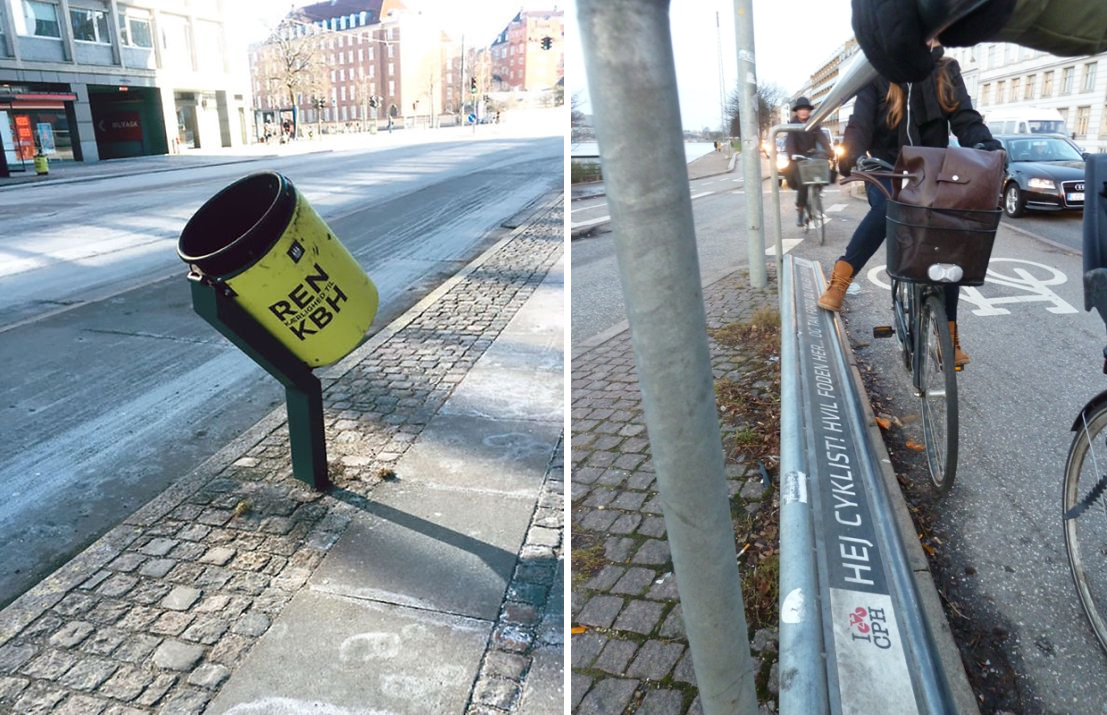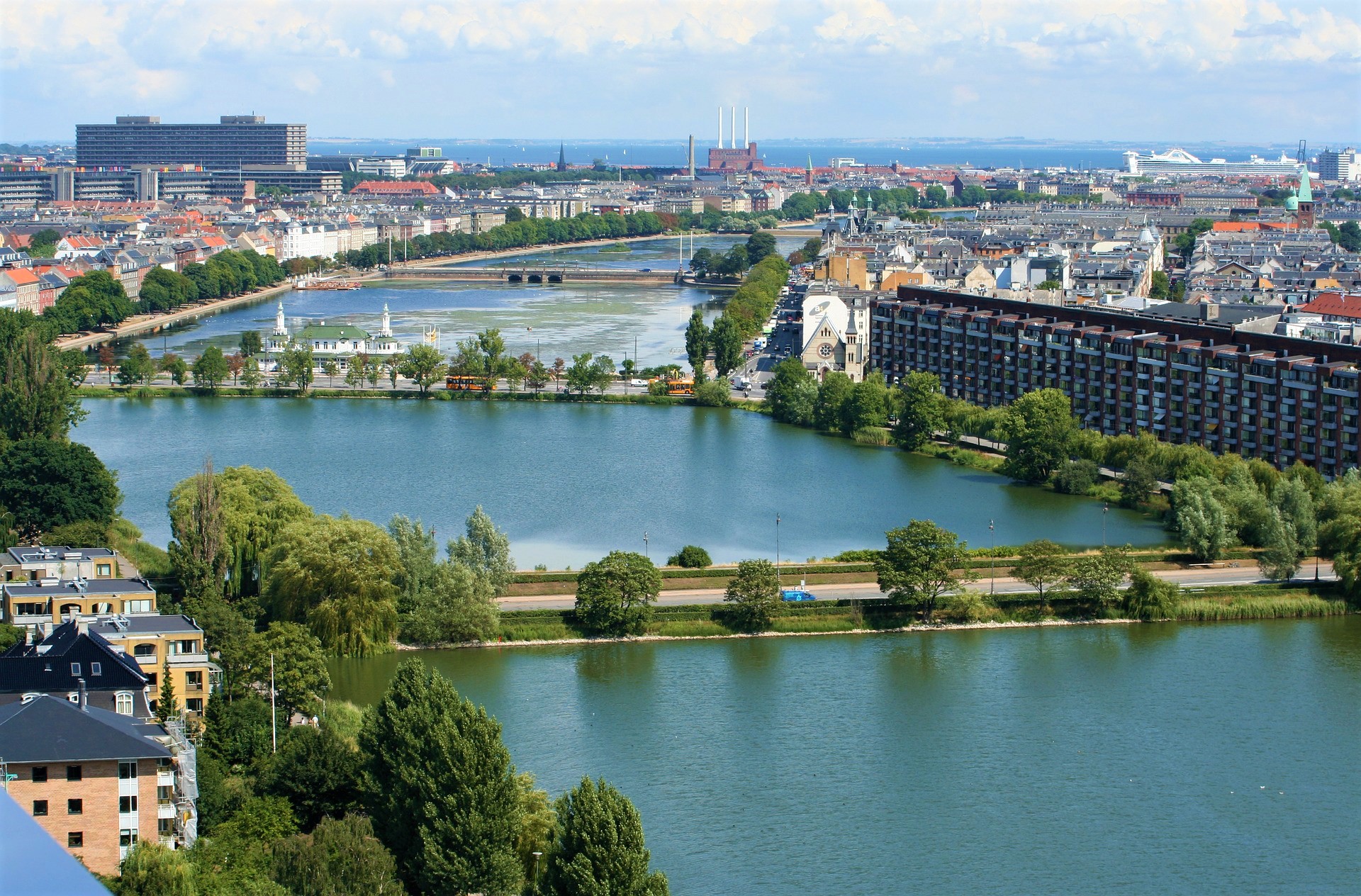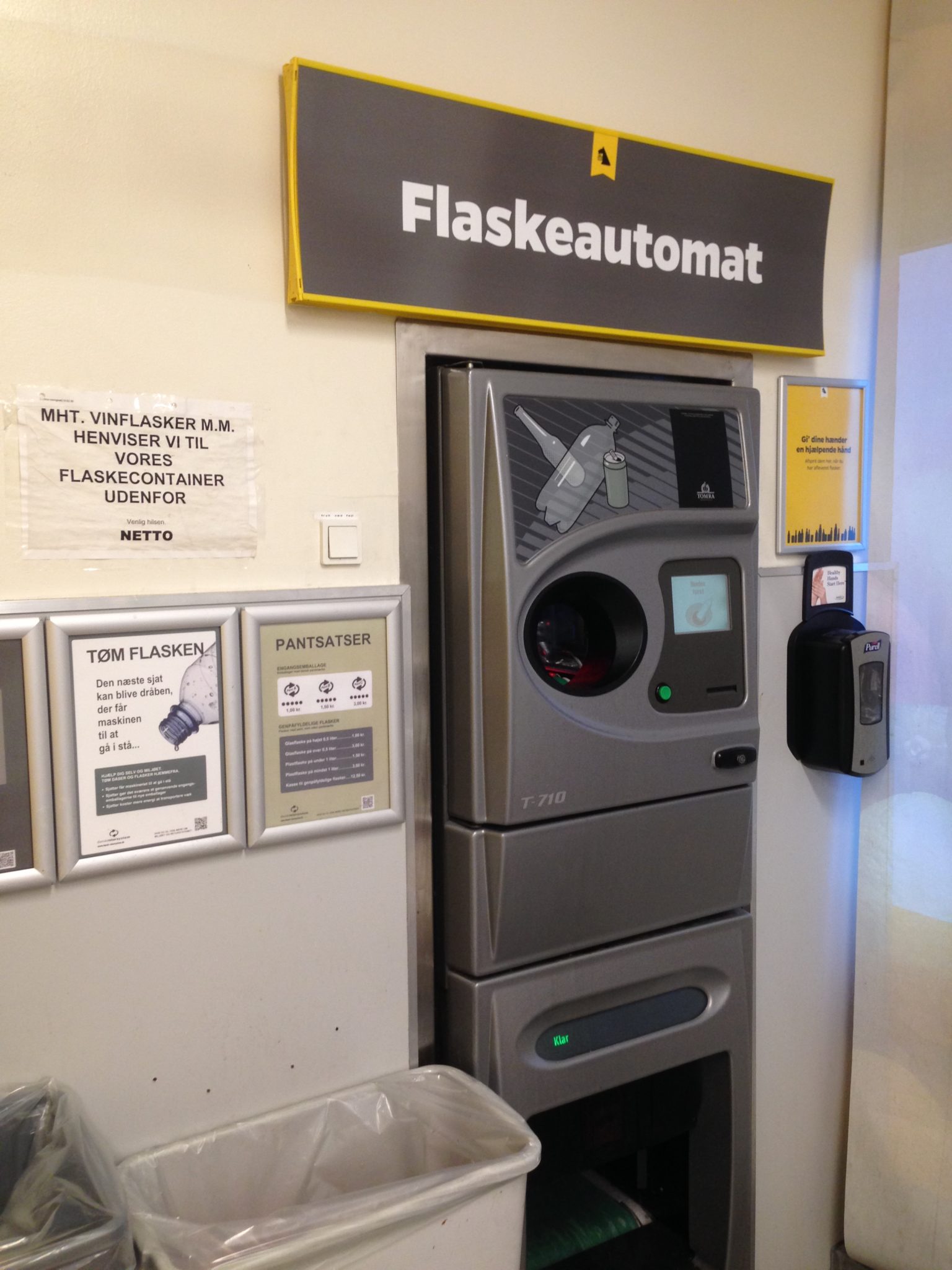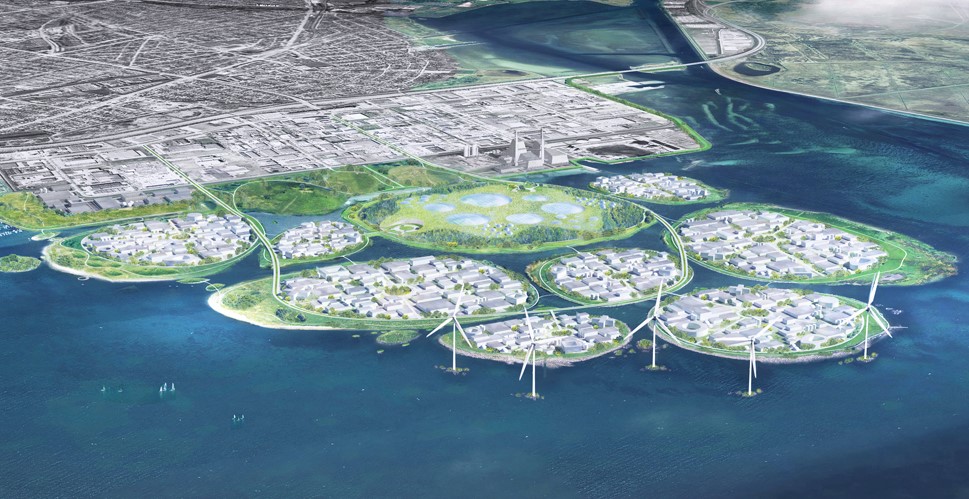Copenhagen has undergone a profound metamorphosis: from a fishing village, through an industrial city, to a Smart City 3.0 relying on trade and services. Some boldly claim that we can find everything that our hearts desire in Denmark’s capital city.
Danish cities have been taking the top places in life quality and satisfaction rankings for years. All urban actions and investments have always revolved around the environment. Looking at the Copenhagen city management policy I have noticed that the authorities have been focusing not on one but on several areas: health, mobility, energy and climate, intelligent residents and intelligent learning. The authorities at Copenhagen, in building their smart city, draw on the concept of creating a city of happy people. Out of the numerous opinions about the Danish capital, I have selected those that fit in well with that idea.
1. COPENHAGEN – THE CYCLING CAPITAL OF EUROPE
It is not Amsterdam but Copenhagen that is Europe’s bikiest city. A bicycle is so much more than just a means of transport to Copenhageners – it is a symbol of the Danish way of living. Everyone cycles side by side, be they youths or the elderly, the mayor, a doctor, a politician, a musician carrying their instrument on the back, or a businessman with a briefcase. Cycling underscores individuality, flexibility and freedom which are all very important to the Danes, because one can independently decide when the journey begins and when it ends. Additionally, a bike integrates all city space users really well.
Statistically, every resident of Copenhagen will travel ca 3 km by bike per day, of which almost 50 per cent is cycling to work, school or just to meet up with friends. It would not be possible if it was not for the excellent infrastructure: there are currently over 300 km of cycling paths in the city (which is 5 times smaller than Warsaw!), and more bridges and tunnels have been built for pedestrians and cyclists than for cars. It must be underscored that it was quite a challenge to have these constructed in a city crisscrossed by canals and waterways.
The bridges deserve special attention because they close a very important communication gap and are a splendid example of the famous Danish functionalism. There have been 13 new bridges and crossovers constructed in Copenhagen since the year 2006, all of them closed to motor vehicle traffic. The first one was the Bryggebroen with the eye-catching orange cycling path, the so called Cykelslangen, zig-zagging over canals.
Cykelslangen bridge. Źródło: ww.visitcopenhagen.com
However, another bridge became the most important one to Copenhagen’s residents. It is the Inderhavnsbroen, a bridge which was commissioned in the year 2016 and which connects the Nyhavn and Christianshavn districts. It was designed to carry 3-7 thousand cyclists per day, but it is used on average by 11 thousand cyclists and 18 thousands pedestrians daily!
The fact that the Danish keep abreast of the needs of residents and the freedom of mobility is proven by new crossovers popping up whenever areas are separated by busy streets, railways, and even periodic city part refurbishments! That was the reason behind building a bridge over Denmark’s busiest Agape street, a bridge leading to Islands Brygge over the banks of the waterway, or the bridge between Lersøparken and Ryparken, which allows pedestrians and cyclists to get from one park into another without the need to use the streets. When working on extending the metro network, the authorities actually built a floating bridge! All this goes to show that the city authorities take care that it is possible to freely move about Copenhagen without a car.
Cyclist counters located throughout Copenhagen show that the number of bicycles entering the city centre has already exceeded the number of cars. The authorities, thus, handle the matter diligently and comprehensively. Over 1 billion crowns (EUR 134 million) has been spent on the cycling route network in the recent years. This amount has to be increased by the cost of crossovers, contraflow lanes, bicycle stands, and free bikes for residents and tourists. The city systematically implements smaller and bigger improvements which, in summary, increase the number of persons willing to use the bike.
 Fot. Franz-Michael S. Mellbin/ www.flickr.com
Fot. Franz-Michael S. Mellbin/ www.flickr.com
They include e.g. special ramps and lifts installed next to metro and train station staircases, because it is possible to travel by public transport together with your bike in Copenhagen – in dedicated train cars (the metro and suburban train system makes it possible to get to almost anywhere in the city from its centre within ca 15 minutes).
They also comprise dozens of free municipal bike repair stations with a compressor to pump the wheels, a basic tool kit. There are foot rests for cyclists at the crossroads (an ingenious solution!), or waste bins next to cycling paths installed in such a way as to make it easy for cyclists to chuck their rubbish into. The city, in order to improve the safety of cyclists in road traffic, has installed curb barriers separating bicycle lanes and the street, and is redesigning large intersections to reduce the number of accidents when turning right.
 Źródło: boredpanda.com, daily.sightline.org
Źródło: boredpanda.com, daily.sightline.org
The cyclists’ safety is also aided by the implementation if the “green wave” system which times the traffic lights so that they are convenient for cyclists. It means that if we are following a route signposted white and green during the rush-hour at 20 km per hour, then we will not once have to stop at a red light!
According to Klaus Bondam, former Copenhagen mayor for Technology and Natural Environment, the authorities of the Danish capital are keen to demonstrate to the world an ecological model of city organisation, with a smaller number of cars and a bigger number of pedestrians and bicycles, which boosts the standard of living of people who are not constantly exposed to noise (I wrote about it here) and polluted air (I recommend the article about smog). Congrats!
2. COPENHAGEN – THE GREEN CITY
In the year 2014, Denmark’s capital city received the European Green Capital Award. 40 per cent of the city area is made up of green spaces, and the area of the largest park, Naturcenter Vestamager, equals 2 thousand hectares (the area of the city equals 74.4 km). Thanks to reasonable spatial planning, most of Copenhagen’s residents can reach parks and greens after a 15-minute walk.

Copenhagen also has a Climate Adaption Plan in place, a pillar of which are green roofs and façades. In the year 2010, it was decided that all newly built or modernised flat-roof buildings are mandatorily to have a plant cover. According to the local plans adopted in 2010 and 2011, it is estimated that ca 200 thousand sq. m. of green roofs will be erected.
3. COPENHAGEN – ECO-METROPOLIS
The green roof plan is but a part of a bigger programme – Copenhagen intends to become the first carbon-neutral global capital in the world by the year 2025. If I am to be honest, looking at the measures it is gradually implementing, I think it might actually succeed. For example, the 20 per cent carbon dioxide emission reduction planned to be achieved by the year 2015 was already achieved in 2011. So called “low emission zones”, i.e. areas with restriction on diesel vehicles and old cars without filters, were introduced at about the same time. The Danish Ministry of Environment requires vehicles to be marked with special labels which prove that they meet the desired standard. It is prohibited to enter a low emission zone without one, or face a penalty of ca EUR 2,500.
The city thinks globally as far as environmental protection is concerned. Copenhagen is renowned for its clean air and a harbour bath right in the centre, with water so clean that it is perfect for swimming.
The city recycles ca 90 per cent of all its waste, and nearly 75 per cent of household waste is used to heat flats. There is no doubt that this result is largely due to the PANT segregation system. Plastic and aluminium packaging is labelled with letters A, B and C, and a respective deposit is added to the product price (from 1 to 3 crowns). To get this money back, it is enough to return the packaging into a dedicated Flaskeautomat and present the coupon printed by the machine to the cashier.
 Flaskeautomat. Fot. Ellen Moore, www.justwaitandsee.net
Flaskeautomat. Fot. Ellen Moore, www.justwaitandsee.net
Copenhagen is powered by the wind, to a large extent – it is claimed that the share of wind-energy will achieve 50 per cent next year. Renewable energy is quite as important for the city as green transport. Electric buses run through the city every 7 minutes and are charged at night, for the passengers’ comfort.
The city is not stopping in its pro-environmental measures. Among the ambitious goals of the city’s authorities are: improving the energy parameters of municipal buildings, increasing the number of parks and playgrounds, building new bicycle paths, and increasing the sales and consumption of ecological goods. Even today 14 per cent of groceries bought in Copenhagen are ecological products, which appears to be a world record. Probably.
According to the forecasts for the next 4 years, the eco-metropolis vision is to cost over one billion crowns!
There are more surprises on the way to the green Copenhagen. Namely, the authorities are planning to create an entirely ecological Holmene district. It is to be built on the water and consist of 9 artificial islets (the earth will be sourced from the metro drillings and all construction sites around the city).
 źródło: www.holmene.com
źródło: www.holmene.com
On the one hand, the archipelago will form a natural barrier to flooding and a nature reserve of sorts to maintain biodiversity, and on the other – it will be a business and residential district for 12 thousand persons and 380 businesses.
The new district is assumed to be ecological due to being powered with wind energy, solar energy and from the largest installation for converting waste into energy in Denmark. The installation will be fuelled with municipal waste and sewage produced by the residents of Copenhagen – in Holmene they will be turned into biogas and pure filtered water.
All ecological energy sources installed on the archipelago will supply enough electricity to supply 25 per cent of the entire capital. Does it sound like a utopia? What do you think?
4. COPENHAGEN – CENTRE FOR INNOVATION
Copenhagen’s politicians are aware that caring for ecology and living conditions in the city provides excellent leverage for innovation, new jobs and investment. In 2017, the city was ranked 1st on the Smart City Index list. One of the key strengths of the city is its ability to provide electronic public services to the residents, of whom 94 per cent are online.
A few years before that, in the year 2014, Copehnagen was given the World Smart Cities Award “for having the world’s best plan for the collection and use of big data”. The project at hand, i.e. Copenhagen Connecting, assumes a 10 per cent reduction in travel time for bicycles and buses (GPSs in buses, intelligent street lighting and traffic lights management), more efficient management of water resources and waste (sensors in drainage grates and waste bins), and real-time air quality monitoring.
Another of Copenhagen’s flagship projects is City Data Exchange. It is a private-public project (PPP is very popular in Denmark, by the way) which will examine the purchasing, selling and sharing of a broad range of data types between all kinds of users in the city – citizens, public institutions and private organisations. The vision is to create a shared data hub in order to foster innovation, improve the quality of life in Copenhagen, stimulate business activity, and help to achieve Copenhagen’s goal to be carbon neutral.
The program will aim to enable collaboration between businesses, start-ups, universities and the public sector. The most data refers to the movement of persons through the city (mobile phone GPSes, urban monitoring images, bicycle movement sensors). In combination with selected parameters, e.g. age, they can be used to improve the management of the city, plan new roads, urban space available for cultural and recreational purposes, or for a proper shop placement. The intention of the project is to fulfil the residents’ needs and supply them with the products and services they need as quickly as possible.
5. COPENHAGEN – LAGOM FOR THE RESIDENTS
In 2013, the international Monocle magazine elected Copenhagen as the world’s best city to live in – ahead of cities like Stockholm, Paris and Tokyo. The cities were judged on many different parameters such as the healthcare system, cost of living, architecture and design, green spaces, ecological solutions.
Nevertheless, Monocle’s editor-in-chief, Tyler Brûlé, was especially inspired by the cycling Copenhageners, who are also environmentally aware and good at recycling their waste.

I fully agree with Mr Brûlé. The rise of the smart city that the Danish capital undoubtedly is would not be possible if it was not for the high awareness and incredible dedication of its residents. Copenhagen demonstrates clearly that to make spectacular changes one needs to instil the conviction in every citizen that they have an important role to play in creating a city which works in tandem with the ecosystem and which is friendly to its residents. Such great results can only be achieved if forces are joined. Denmark’s capital city used to be an average European city – today it is a leading smart city of the world.
I sincerely hope that other cities will want to emulate this Danish city in the future.








